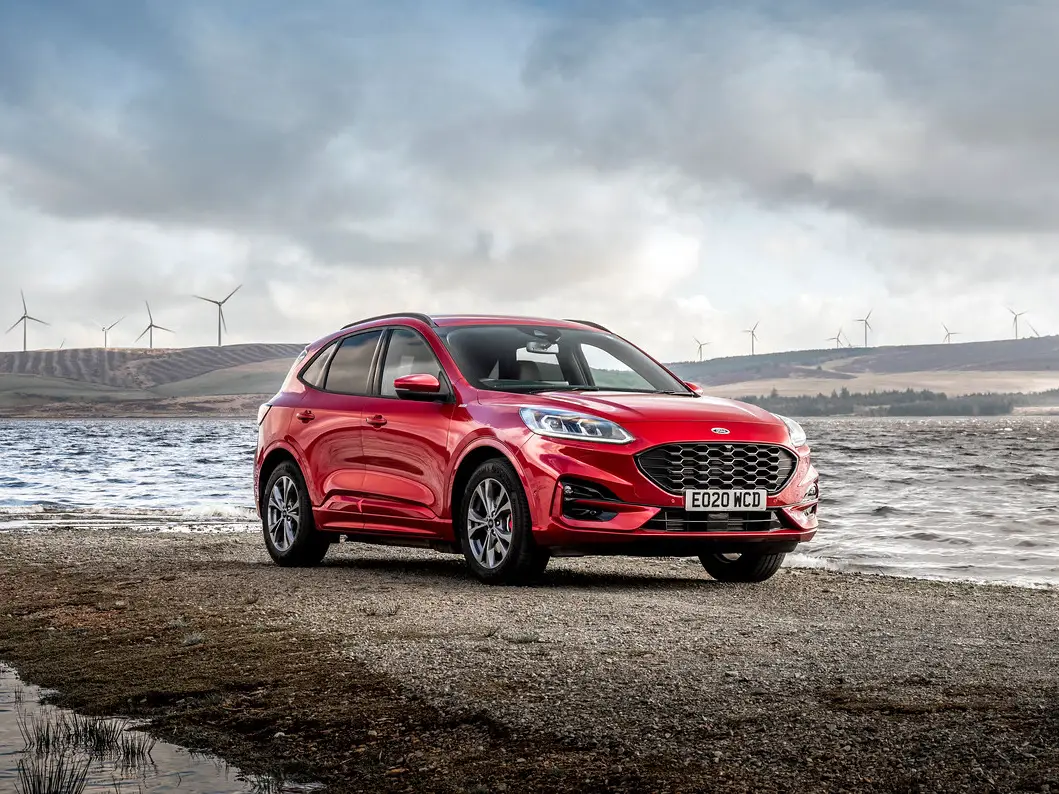Fords are not synonymous with hybrid vehicles in the U.S. However, in Europe, where emission standards are stricter, the company is deploying more electrified vehicles, more rapidly.
Along with a focus on engine efficiency is engine noise. Because the size of the traditional internal combustion engine has shrunk with the innovation and addition of electric motors and batteries in vehicles, there is less engine noise permeating the boundaries between the passenger and the power plant.
More insulation in the cabin means less road noise is passed on to passengers.Photo courtesy of Ford Motor Company
Many hybrid vehicles operate with a four-cylinder engine under the hood. They are typically paired with a transmission. Some cars, like the Honda Insight, have no transmission and instead operate on a two-motor system. That transmission typically comes in three varieties: continuously variable transmission (CVT), dual-clutch transmission (DCT), or -speed transmission.
In the past, CVTs were known for being noisy and operating with what has been called a “rubber band effect”. Though they’ve evolved to get better over time, a large reason as to why they’ve become more tolerable is the evolution and addition of sound-deadening technology around the cabin of the car.
You won’t find details of it in a dealer brochure, but automakers are increasingly adding insulation to vehicles, front to rear and at the sides, to keep noise at bay. Ford is one such automaker, deploying what it calls its “Whisper Strategy” – a series of small noise improvements that add up to a big difference.
For its new Kuga SUV, a small model built on the same platform as the Focus and sold outside the U.S., Ford examined minute details, such as door seals, to find ways to lessen the amount of noise permeating the cabin.
The car was designed with a drive mode that allows it to run on just electric power.Photo courtesy of Ford Motor Company
From there, the engineering team added perforation to the SUV’s Vignale leather seat bolsters, which lessened the number of flat surfaces in the cabin allowing materials to absorb noise rather than reflect it.
Sound shields were added to the underside of the body of the vehicle, limiting road and wind noise permeation, and increasing the car’s aerodynamic design.
The manufacturer shrunk the Chanels behind the car’s exterior panels that traditionally hold hidden wiring to limit the airflow through the vehicle’s body.
It took engineers two years to test more than 70 different tires on smooth and rough surfaces, in wet and dry conditions, and at a range of speeds to find which set best kept road noise at bay while achieving goals for grip and comfort.
When behind the wheel of the new Kuga Plug-In Hybrid model, drivers can opt for EV Now drive mode, which switches off the petrol engine and allows the vehicle to run on all-electric power. Without engine noise, the only sound coming into the cabin is from the road and wind. In controlled tests, that noise amounted to 52 decibels, the equivalent of a gentle rainfall.
Just How Much Quieter is a Hybrid Than the Cars of Yesterday?
www.youtube.com
That same model also employs active noise cancellation technology. According to Ford, “The system works just like popular noise-cancelling headphones – detecting unwanted low-frequency cabin sounds through strategically-placed microphones and counteracting them with an opposing sound wave from the B&O Sound System.”
Ford isn’t the only automaker employing these sound deadening techniques. Nissan has had “library-level” noise as a goal for quite some time and the peaceful cabin of the Rogue is frequently noted in journalist reviews. Rolls-Royce prides itself on extra thick, plush carpeting between occupants’ feet and the floor of the car, which helps keep road noise away.
The Kuga isn’t the only vehicle with these sound deadening features. The practices explored with it are common when a vehicle is redesigned. The biggest difference is that all-electric drive mode, which is only available in PHEVs and EVs.








